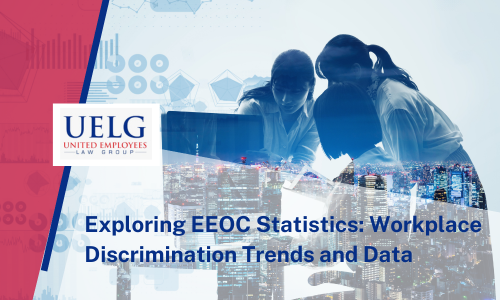Exploring EEOC Statistics: Workplace Discrimination Trends and Data
The US Equal Employment Opportunity Commission (“EEOC”), in collaboration with other labor organizations, has issued its regulatory agenda, establishing important regulations to be pursued in 2024. The EEOC’s vital work helps to identify and eliminate discrimination at work, and in part culminates in the annual EEO-1 Report. The EEO-1 Reports contain the results of the EEOC’s mandatory annual data collection that requires all private sector employers with 100 or more employees, and federal contractors with 50 or more employees meeting certain criteria, to submit workforce demographic data, including data by job category, to include sex and race or ethnicity. To find more about EEOC Data Collections, go to https://www.eeoc.gov/data/eeo-data-collections; to see the EEOC Data, go to https://www.eeoc.gov/data/data-and-statistics. The EEO-1 Reports are a fundamental resource to assist in promoting and supporting workplace equality and inclusion, and also provide an in-depth analysis of employment data. The Reports aim to facilitate the development of focused measures to address inequities and promote equitable workplace treatment. To gain more knowledge of these crucial matters, contact an EEOC lawyer at UELG.
A glimpse into EEOC charges reveals key insights into prevalent workplace issues:
-
- Complaints of Harassment: the prevalence of EEOC charges of harassment (i.e., harassment complaints filed with the EEOC) illustrate the extremely high number of harassment incidents at the workplace, emphasizing the need for increased awareness and the implementation of more effective obstacle and enforcement measures.
-
- Workplace Discrimination: The EEOC continuously supervises and monitors employment discrimination allegations, addresses unfair treatment trends relating to protected groups, and provides guidance on how to file a workplace discrimination charge. Click on this link to learn how to file an EEOC charge: https://www.eeoc.gov/filing-charge-discrimination. The statistics revealed in the EEO-1 Data (https://www.eeoc.gov/data/data-and-statistics) highlight the need for establishing a fair and inclusive employment environment.
-
- Retaliation Claim Denial: The EEOC data sheds light on the challenges involved in handling retaliation claims, emphasizing the critical role of safeguarding from retribution people who report discrimination.
What workplace trends to expect in the future under Title VII:
Title VII of the Civil Rights Act of 1964 (“Title VII”) is the most widely known and comprehensive of the federal laws that combat workplace discrimination and harassment, enforced by the EEOC. Here are trends to look for:-
- Diversity Initiatives: Companies are likely to invest in robust diversity and inclusion programs to create more representative and inclusive workforces.
-
- Training and Education: Organizations will prioritize anti-discrimination training to foster awareness and prevent discriminatory behaviors.
-
- Data Analysis: Data-driven approaches will gain prominence, enabling businesses to identify and address disparities through comprehensive analysis of EEOC statistics.
